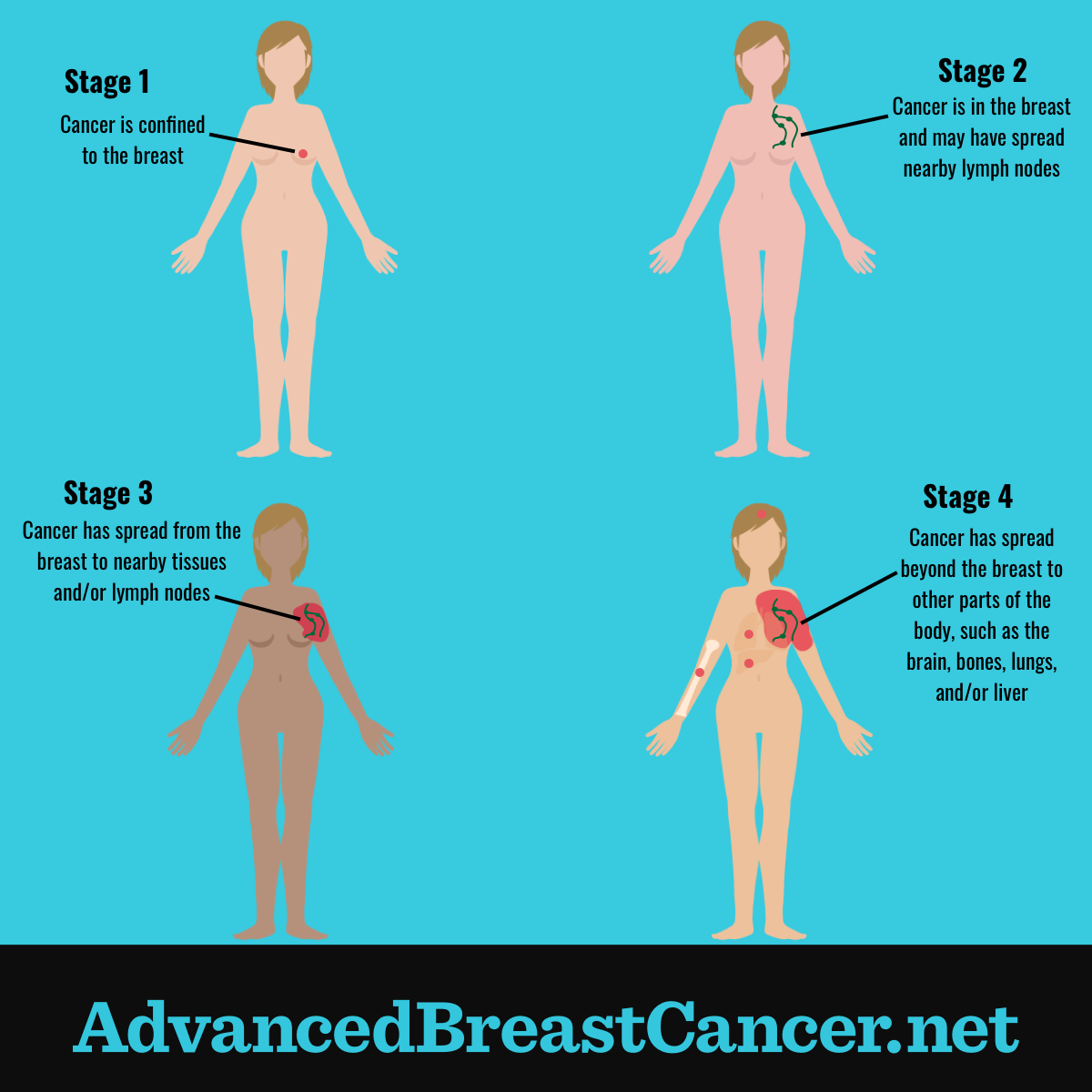Breast Cancer Stages
Reviewed by: HU Medical Review Board | Last reviewed: November 2024 | Last updated: November 2024
When people are diagnosed with cancer, doctors assign their cancer a stage. The stage generally describes how large the cancer is along with whether or how much it has spread. There are different methods doctors use to determine cancer stages. Stages help doctors explain your condition and recommend treatment.1,2
How are breast cancer stages determined?
Doctors may use tests, biopsies, or surgeries to determine the current stage of the cancer. Factors that impact stage include:1-3
- How big the tumor is
- Whether the cancer has spread
- Certain characteristics of the tumor cells
TNM staging system
The most common staging system for breast cancer is the TNM system. In this system, the letters “TNM” are paired with numbers to describe different cancer attributes:1-3
- T describes a tumor’s size. “T” is followed by a number between 0 and 4, which denotes the primary tumor size. A smaller number means that the primary tumor is smaller. For example, T1 means the tumor is smaller than 2 cm.
- N describes the number of nearby lymph nodes with cancer. “N” is followed by a number that generally explains how many lymph nodes are affected. For example, N1 may mean the cancer has spread to 1 to 3 lymph nodes.
- M describes whether the cancer has spread to other parts of the body (metastasized). M0 means no cancer spread was found. M1 means the cancer has spread.
Your doctor also may use other letters that describe the features of the cancer cells. These include whether the cancer has proteins called estrogen receptor (ER) or progesterone receptor (PR). They may also describe if the cancer makes a lot of a protein called HER2.1-3
Other ways to describe stage
TMN is a detailed way to describe breast cancer. But the TNM classification can be simplified into 5 stages. Sometimes, these numbers are paired with letters. The higher the letter or number, the more advanced the cancer. This might be the staging system you are more familiar with.1-3
The simplified stages include:1-3
- Stage 0 – There are cancer cells, but they have not spread. This is also called noninvasive cancer.
- Stage 1 – The disease is invasive. There is a small tumor and the lymph nodes may be impacted.
- Stage 2 – The disease is invasive. The tumor may be small and has spread to between 1 and 3 lymph nodes. Or the tumor may be larger but with no impacted lymph nodes.
- Stage 3 – The disease is invasive. The tumor may be any size and has either spread to the chest wall or to more than 4 lymph nodes. This stage is also assigned when the tumor is larger than 5 cm and it has spread to 1 to 3 lymph nodes.
- Stage 4 – The tumor can be any size. The cancer has spread to other organs or parts of the body such as the bones, brain, lungs, or liver.
Figure 1. Overview of breast cancer stages
Breast cancer grade
Cancer cells can also be assigned a grade if they are removed and tested in a lab. The grade describes how much the cancer cells look like regular cells. It can help doctors understand how the cancer might spread or what treatments to try.4
Breast cancer grades range from 1 to 3:4
- Grade 1 – The cells look similar to normal cells. They are growing slowly and are less likely to spread.
- Grade 2 – The cells look less normal and are growing fairly quickly.
- Grade 3 – The cells look very different from normal cells. They are also growing very fast and are more likely to spread.
Staging and classifying breast cancer can be very complex. If you have questions about your stage or grade, talk with your doctor.1-4
